APBI402-Rangeland
Case Study
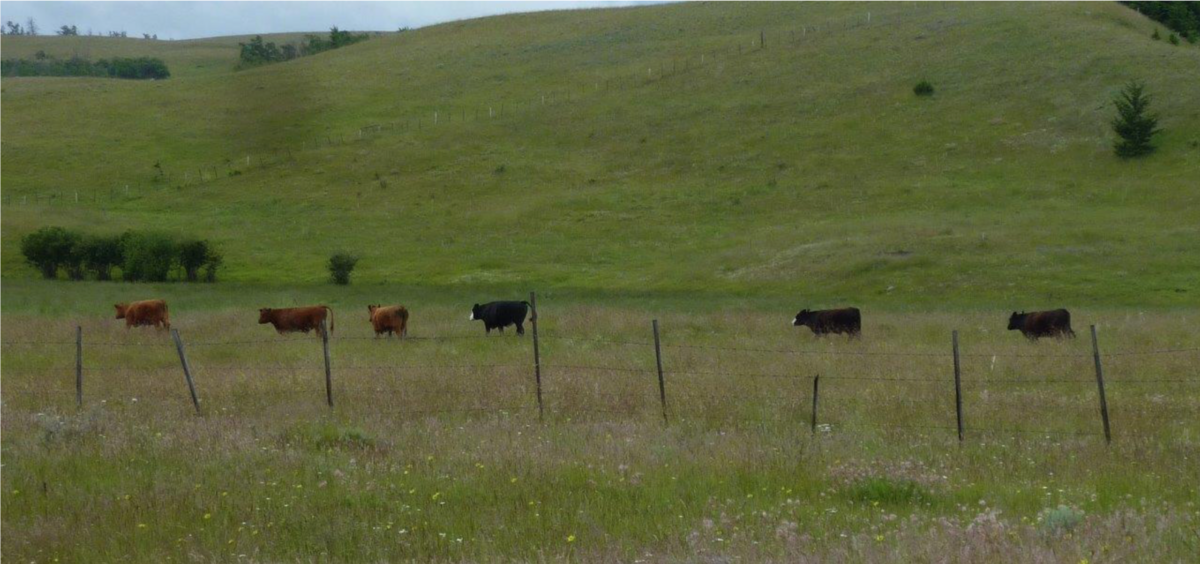
Effects of Long-Term Grazing on Rangeland Soil Quality in Southern BC
Overall case specific learning outcome: to characterize the soil quality of rangeland soils, with an emphasis on soil physical properties.
With the help of a series of guiding questions and the interaction with instructors and your group members, you will accomplish the following tasks:
- Interpret the results of the long-term cattle grazing experiment.
- Describe your learning in written format (as individual students) and orally (as a working team).
- Post on the course web site responses to the guiding questions.
Week One
Background
Before the 1970s the traditional grazing system on rangelands in the southern interior of British Columbia (BC) consisted of extended periods of fall and spring grazing without any rest, which resulted in deterioration of the rangeland ecosystems. Seasonal-suitability grazing systems were consequently established in late 1970s to improve rangeland conditions. These systems employ grazing only in late spring or fall on bunchgrass rangelands at middle and higher elevations. To date, the effects of various grazing systems on vegetation changes and animal
production have been well documented, while less attention has been given to impacts of grazing on the soil.
The study site was located on the Lac du Bois Grassland Provincial Park (50°45’N and 120°25’W) northwest of Kamloops, BC. Soil of the study site is a Dark Brown Chernozem (soil series – McQueen) loam developed on glacial till. The elevation within the study site is 600-850 m above sea level. The climate is semiarid with an average annual precipitation of 270 mm (Environment Canada, 2004). Canadian climate normals 1971-2000. Kamloops airport meteorological records, http://www.climate.weatheroffice.ec.gc.ca/climate_normals/. The study sites are located within the Bunchgrass biogeoclimatic zone where dominant vegetation consists of bluebunch wheatgrass (Pseudoroegneria spicata (Pursh) Scribn. & Smith) and big sagebrush (Artemisia tridentata Nutt.).
The long-term grazing experiment, established in 1978, consists of two pastures (replicates). Each pasture is covering an area of 65 ha. The following grazing systems are present on these two pastures:
- fall only each year,
- spring only each year, and
- fall and spring (FS) the same year.
Within each grazing treatment there were two exclosures (25 x 50 m) established to prohibit livestock grazing. All grazing treatments were grazed at 0.6 animal unit months (AUM) per ha-1 (corresponding to 45-50% use of available forage)[1]. The fall and spring (FS) grazing treatment had half as many animals (cows and calves) in fall and again in spring as the other two treatments grazed only once per year. The spring grazing period was from mid-April to mid-May, while fall grazing occurred from mid-September to mid-October. Soil sampling was done 20 years after the experiment was established, i.e. in June 1998.
Learning objective
Identify and discuss the soil formation factors focusing on the soil type present on the study sites north of Kamloops, BC.
Student tasks
- Review background information on soil formation, and classification, focusing on the Chernozemic soil order.
- Share individual learning with group members (ongoing for weeks 1-4).
NOTE: Before next week’s session, your team should research any gaps in knowledge regarding the guiding questions for today’s session.
Guiding questions
- What are key properties of Chernozems?
- What soil properties are of an importance for management considerations on McQueen soil?
Key references
- Soils of the Ashcroft Map Area by Young, G., Fenger, M.A., and Luttmerding, H.A. 1992. (MOE technical report no. 23 / BC soil survey report no. 26). [this book is available at http://www.llbc.leg.bc.ca/public/pubdocs/bcdocs/104459/bc26_report.pdf
- Canadian System of Soil Classification by Agriculture Canada Expert Committee. 1998. (3rd edition) available at http://sis.agr.gc.ca/cansis/publications/manuals/1998-cssc-ed3/cssc3_manual.pdf
- van Ryswyk, A.L., McLean, A., and Marchand, L.S. 1966. The climate, native vegetation, and soils of some grasslands at different elevations in British Columbia. Can. J. Plant Sci. 46:35-50.
- Rangeland Handbook for BC by Campbell, C.W. and Bawtree A.H. 1998. BC Cattlemen’s Association, Kamloops, BC.203 p. [this book is available on 2-hour reserve in the Woodward Library]
- Dyanatkar, S., M. Krzic, J. Wilson, C. Crowley, N. Sidles, K. Watson, A. Bedard-Haughn, N. Basiliko, and P. Sanborn. 2013. SOILx. Virtual Soil Science Learning Resources. [www.soilx.ca]
NOTE: It might be useful that you view section on Chernozemic soils presented on the following web site http://soilweb.landfood.ubc.ca/classification/
Week Two
Background
One of the primary objectives of the rangeland management is to protect and improve rangeland resources such as vegetation, soil, water, and wildlife. To accomplish this, various management practices are employed. They include:
- Grazing management
- number and distribution of animals
- seasonal grazing
- mixed animal species grazing
- Vegetation management
- weed control (by chemical, biological, or mechanical means)
- seeding of rangelands by either native or introduced plant species
- fertilization of rangelands
All of the management practices mentioned above can either improve or degrade rangeland soils and they should be applied according to recommendations developed for a particular region. Rangeland management should be designed in such way that it prevents or reduces soil degradation, specifically, erosion and compaction.
Learning objective
Evaluate the extent of grazing impacts on soil physical properties.
Student tasks
- Review the soil data collected at the Lac du Bois Range (See Attachments). These data were collected as a part of the project funded by the Beef Cattle Industry Development Fund and the Matching Investment Initiative of Agriculture and Agri-Food Canada.
- Review background information on management practices carried out on the study sites.
- Gain basic understanding of soil quality concept.
NOTE: Before next week’s session, your team should research any gaps in knowledge regarding the guiding questions for today’s session.
Guiding questions
- Based on the data that you received, what can you infer about the effects of time of grazing on soil physical properties?
- Based on the data that you received, what can you infer about the effects of grazing (stocking) rate on soil physical properties?
Key references
- Evans, C.R.W., M. Krzic, K. Broersma, and D.J. Thompson. 2012. Long-term grazing effects on grassland soil properties in southern British Columbia. Canadian Journal of Soil Science 92: 685-693.
- Rangeland ecology and management by Heady, H.F., and Child, R.D. 1994.Westview Press Inc. Boulder, CO. [this book is available on 2-hour reserve in the Woodward Library]
- Canadian System of Soil Classification by Agriculture Canada Expert Committee. 1998. (3rd edition) available at http://sis.agr.gc.ca/cansis/publications/manuals/1998-cssc-ed3/cssc3_manual.pdf
- Rangeland Handbook for BC by Campbell, C.W. and Bawtree A.H. 1998. BC Cattlemen’s Association, Kamloops, BC.203 p. [this book is available on 2-hour reserve in the Woodward Library]
Week Three
Learning objective
Identify soil quality indicators that could be used to monitor the sustainability of management practices at the Lac du Bois Range.
Student tasks
- Develop a soil quality framework for the Lac du Bois Range
- Preparation for group presentations.
NOTE: Before next week’s session, your team should research any gaps in knowledge regarding the guiding questions for today’s session. Start preparing for the group presentation and please consult guidelines given in the course syllabus.
Guiding questions
- What are potential effects of the soil organic matter on the soil physical properties of the site in southern interior of BC?
- List some soil quality indicators, with emphasis on physical properties that could be used to monitor the sustainability of the management of the Lac du Bois Range.
Week Four
Group presentations and synthesis
Each group will present results of their work on case 1 (please remember that your presentation should be max 20 minutes long) and along with the instructors compare and contrast the methods of diagnosis and interpretations of soil physical quality in the case studies:
- Forest landings
- Soil erosion in the middle mountains in Nepal
- Rangelands in southern BC
The presentations will be evaluated on the basis of content, structure, and delivery (please see course outline for more details).
One of the signs of successful presentation is how well the presentation engages other groups into discussion.
Attachments
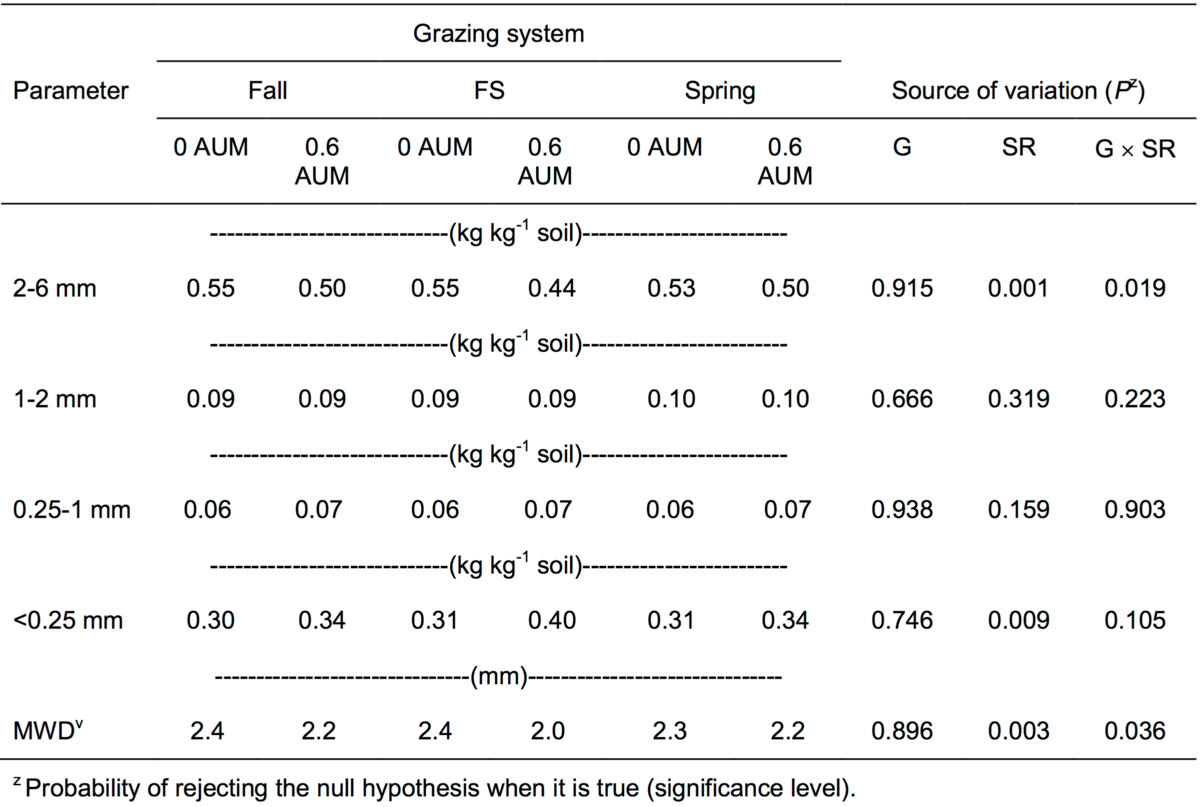
Mean weight diameter () represents the sum of the mean diameter of each size fraction () and the proportion of the sample weight occurring in the corresponding size fraction () (Nimmo and Perkins, 2002). The summation is carried out over all four size fractions, including the one that passed the 0.25-mm sieve (). Corrections were made for the sand fraction retained on each sieve to avoid biased interpretations of water stable aggregates.
Nimmo, J.R. and K.S. Perkins. 2002. Aggregate stability and size distribution. In: A. J.H. Dane and G.C. Topp (Ed.) Methods of soil analysis: Physical methods. Part 4. Number 5 in the Soil Science Society of America Book Series. Madison, WI. pp. 317-328.
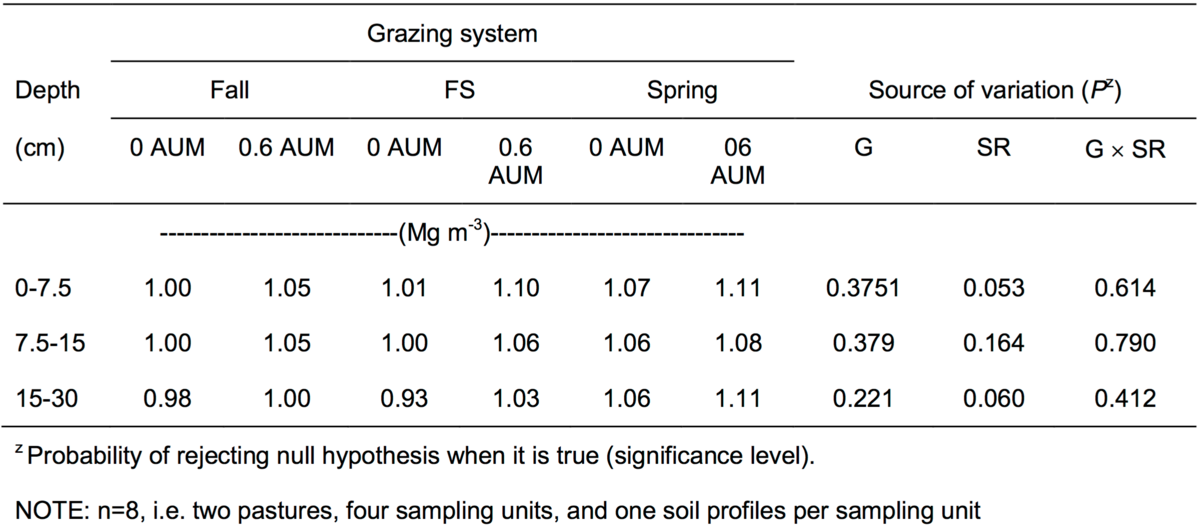
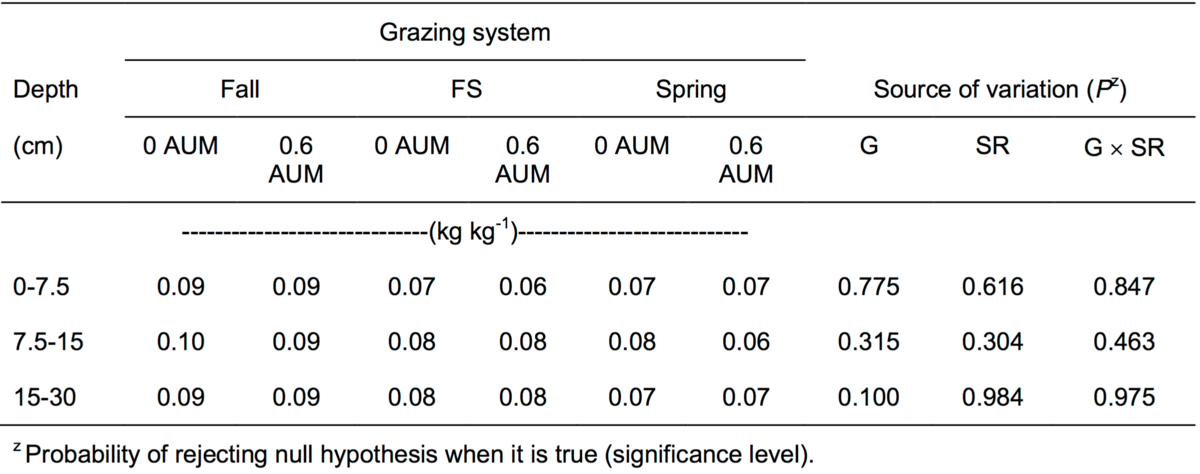
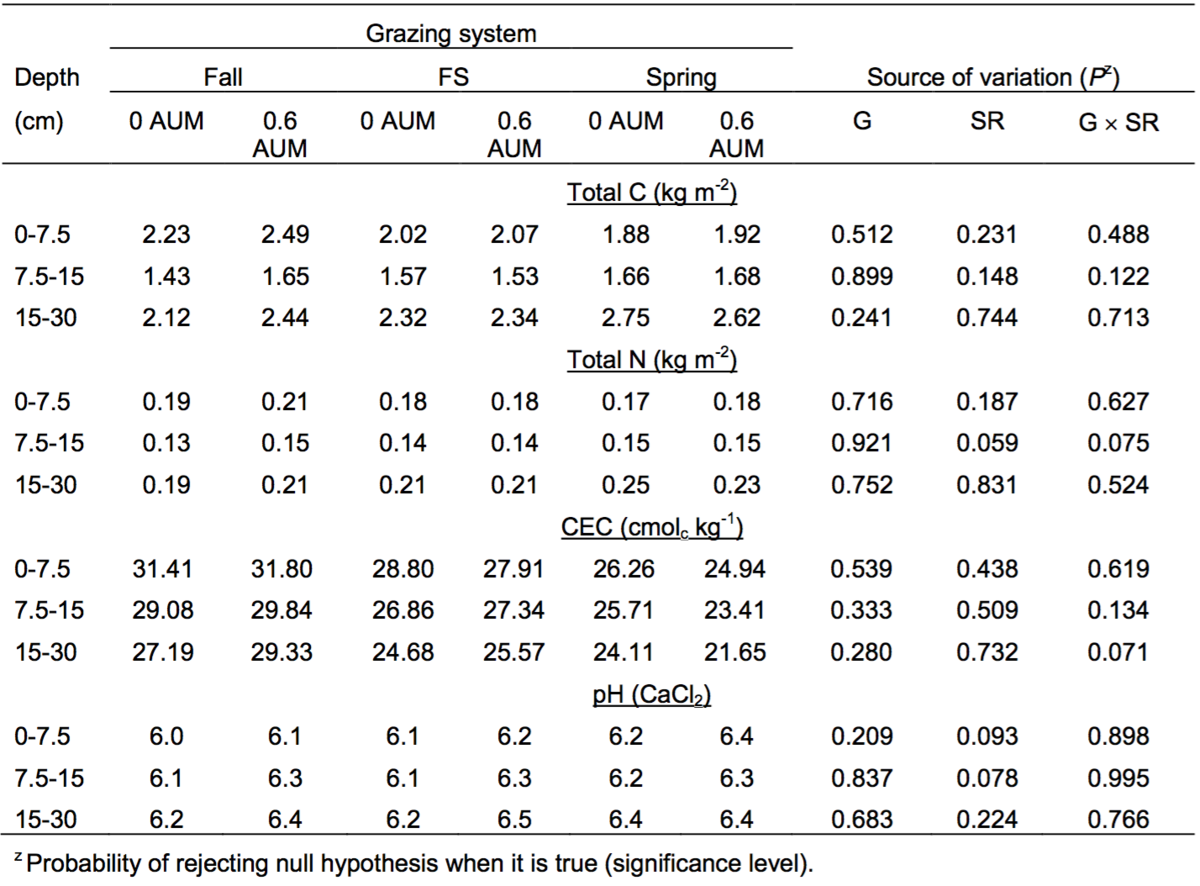

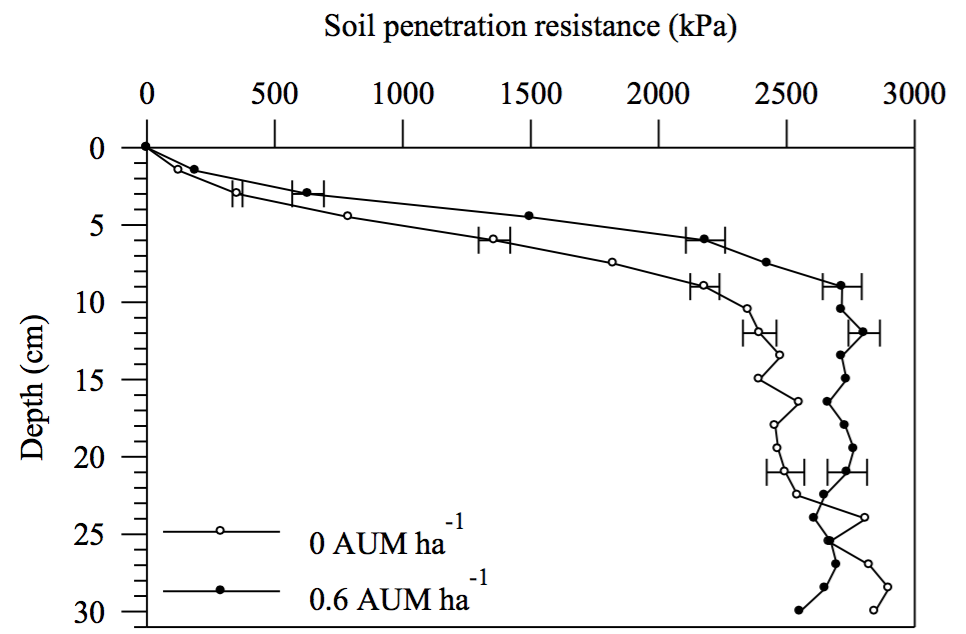
Footnotes
- ↑ Knowing how much forage an animal needs is the first step in determining how many animals can be supported on the land available. The amount of forage required by one animal unit (AU) for one month is called an Animal Unit Month (AUM). One animal unit is defined as a 1,000 lb (450 kg) beef cow with or without a nursing calf with a daily requirement of 26 lb (11.8 kg) of dry matter forage. Therefore, 1 AUM is equal to 780 lb (355 kg) of dry matter forage (30 days x daily forage requirement).



